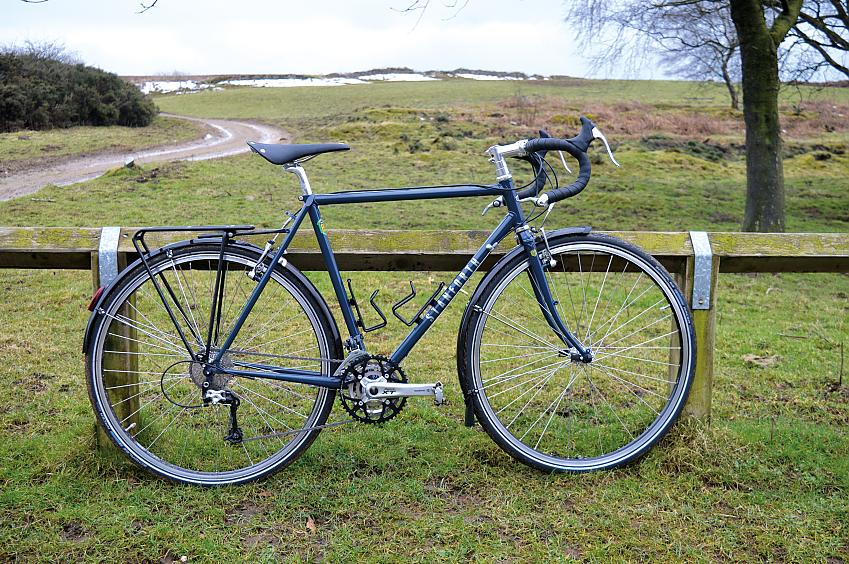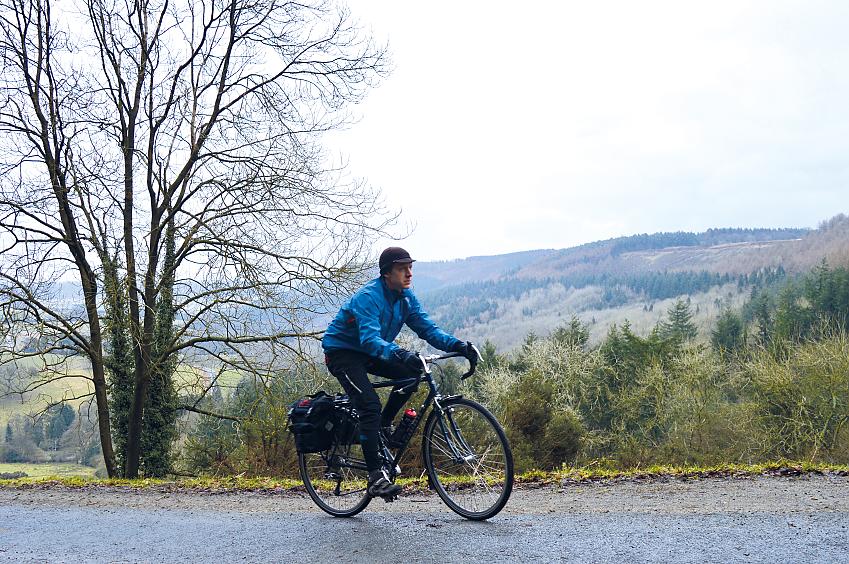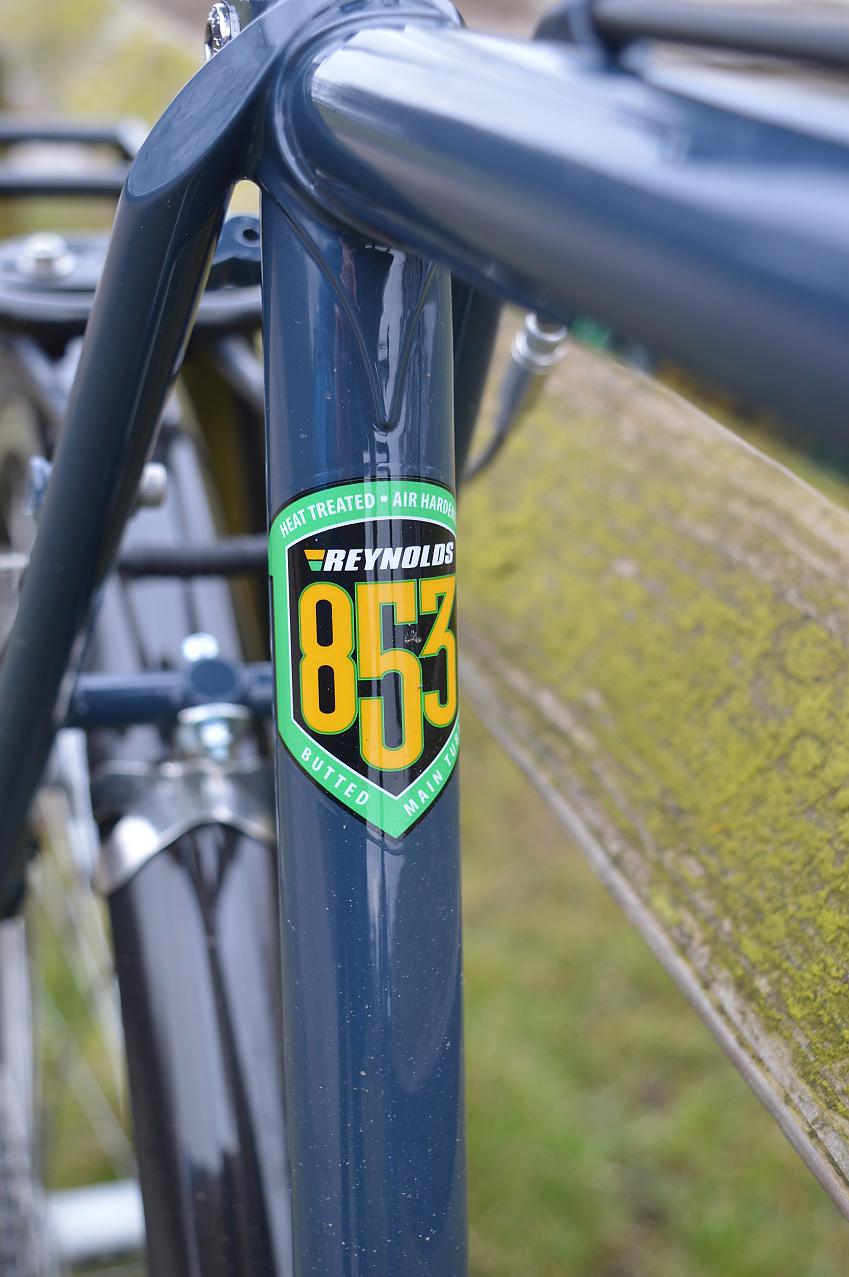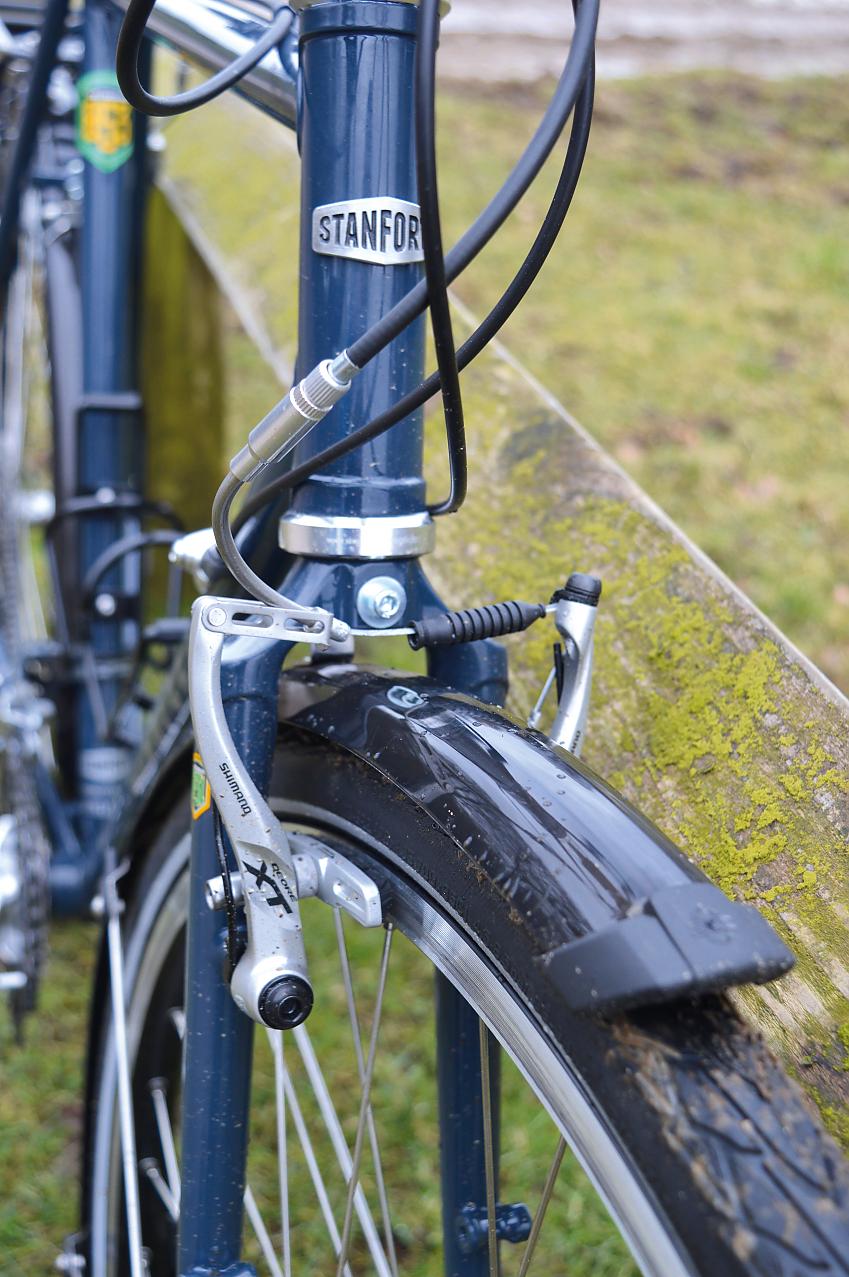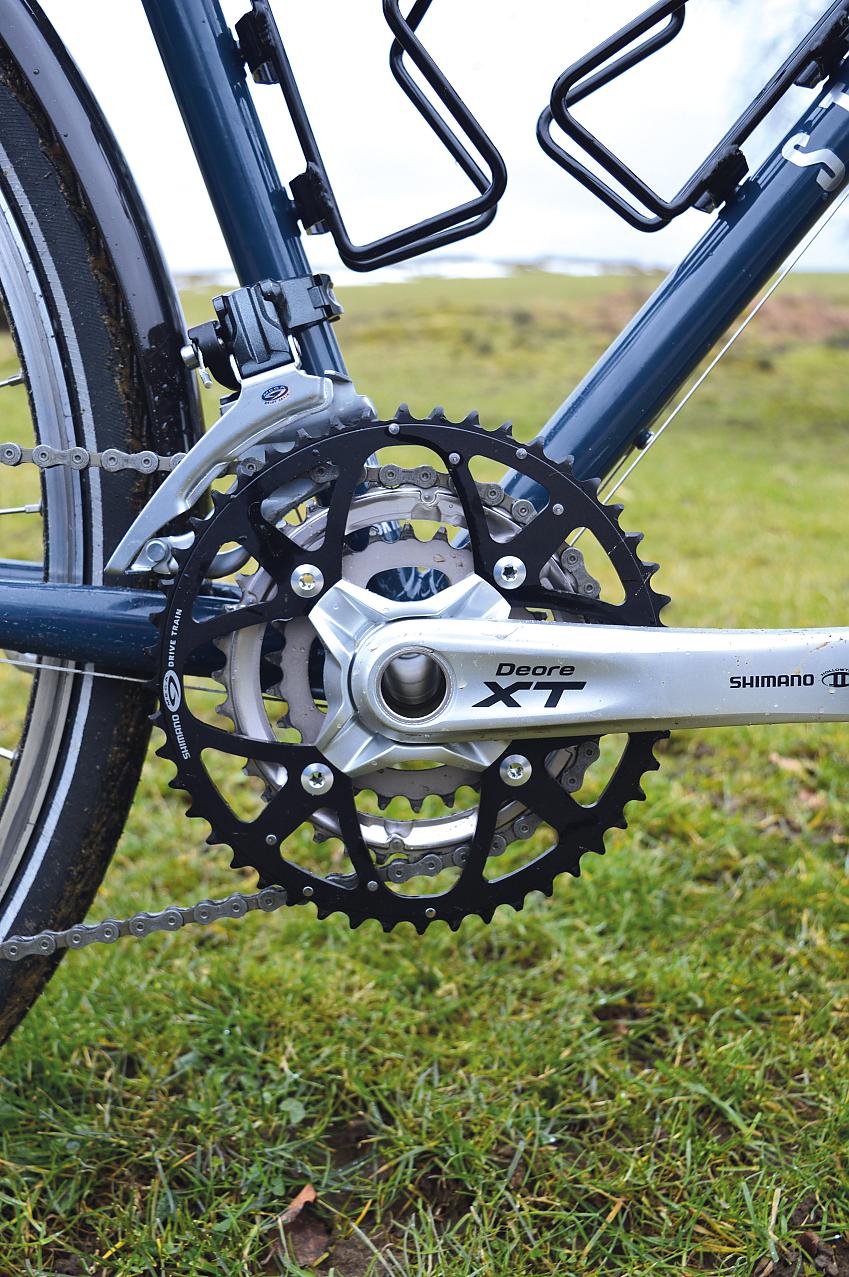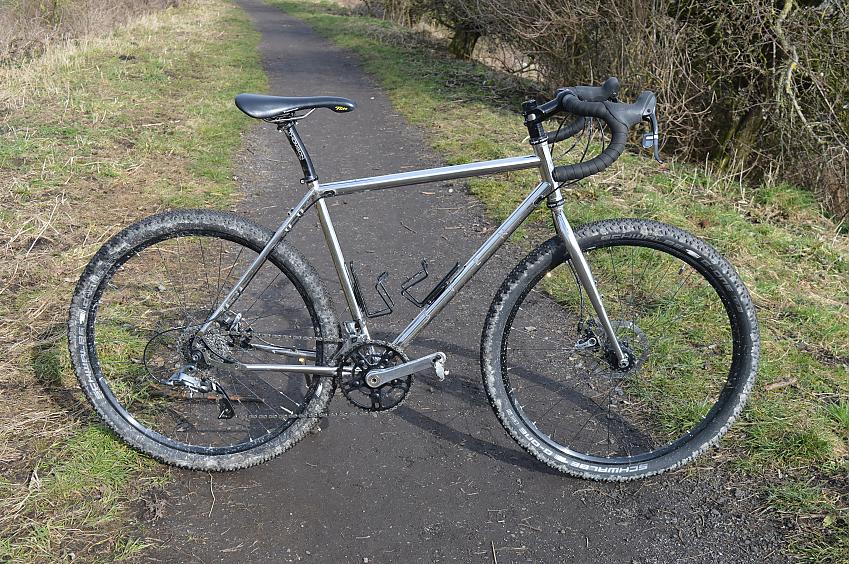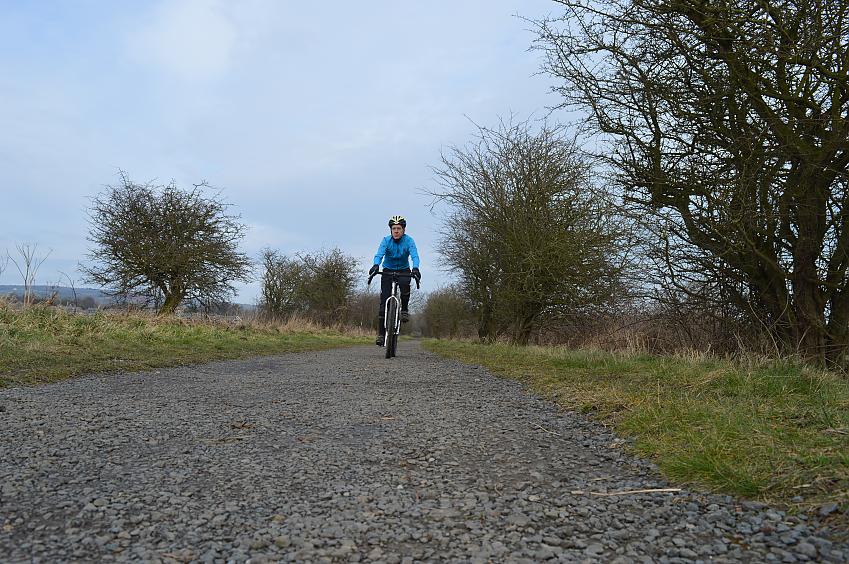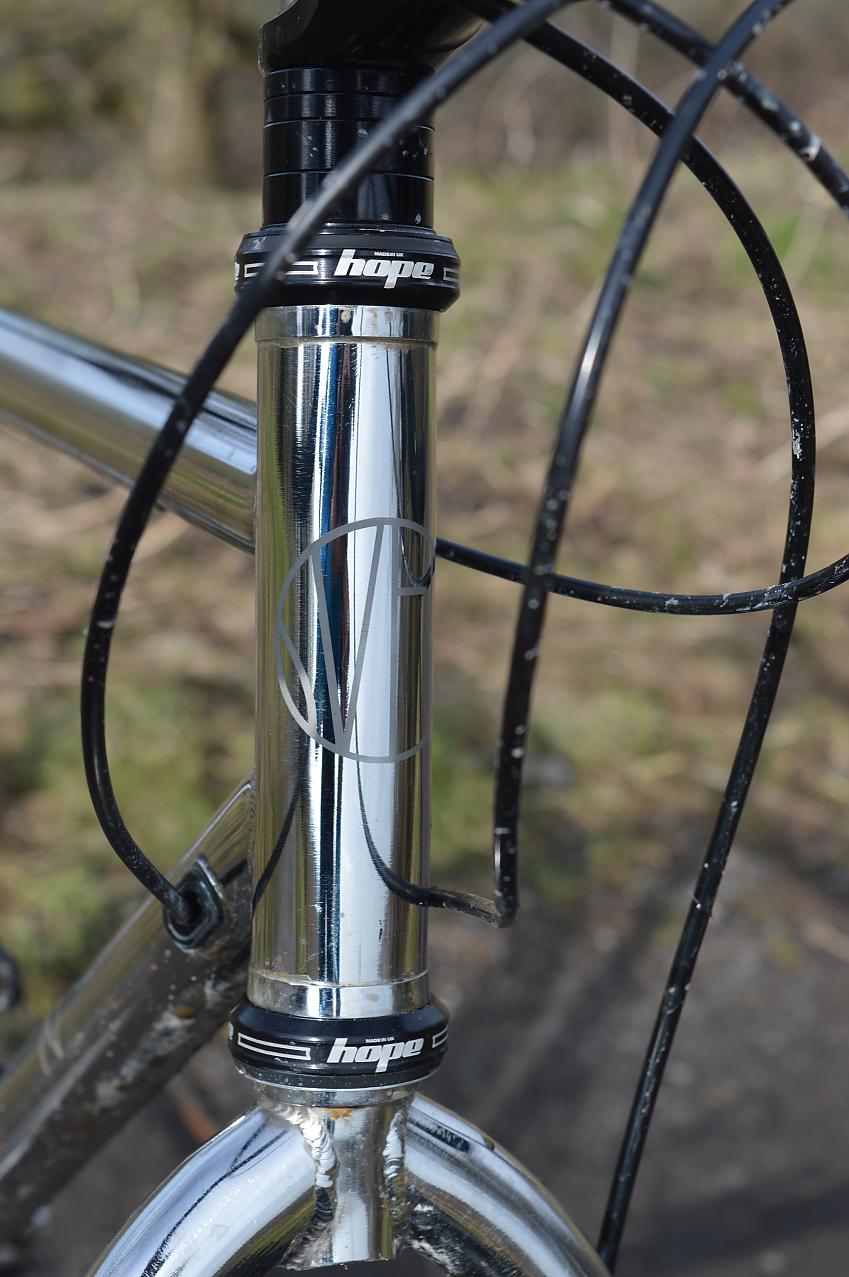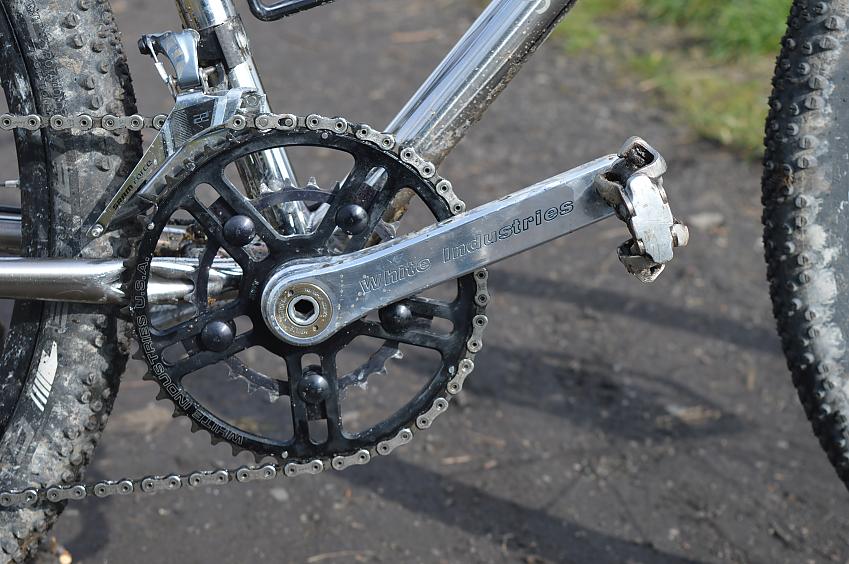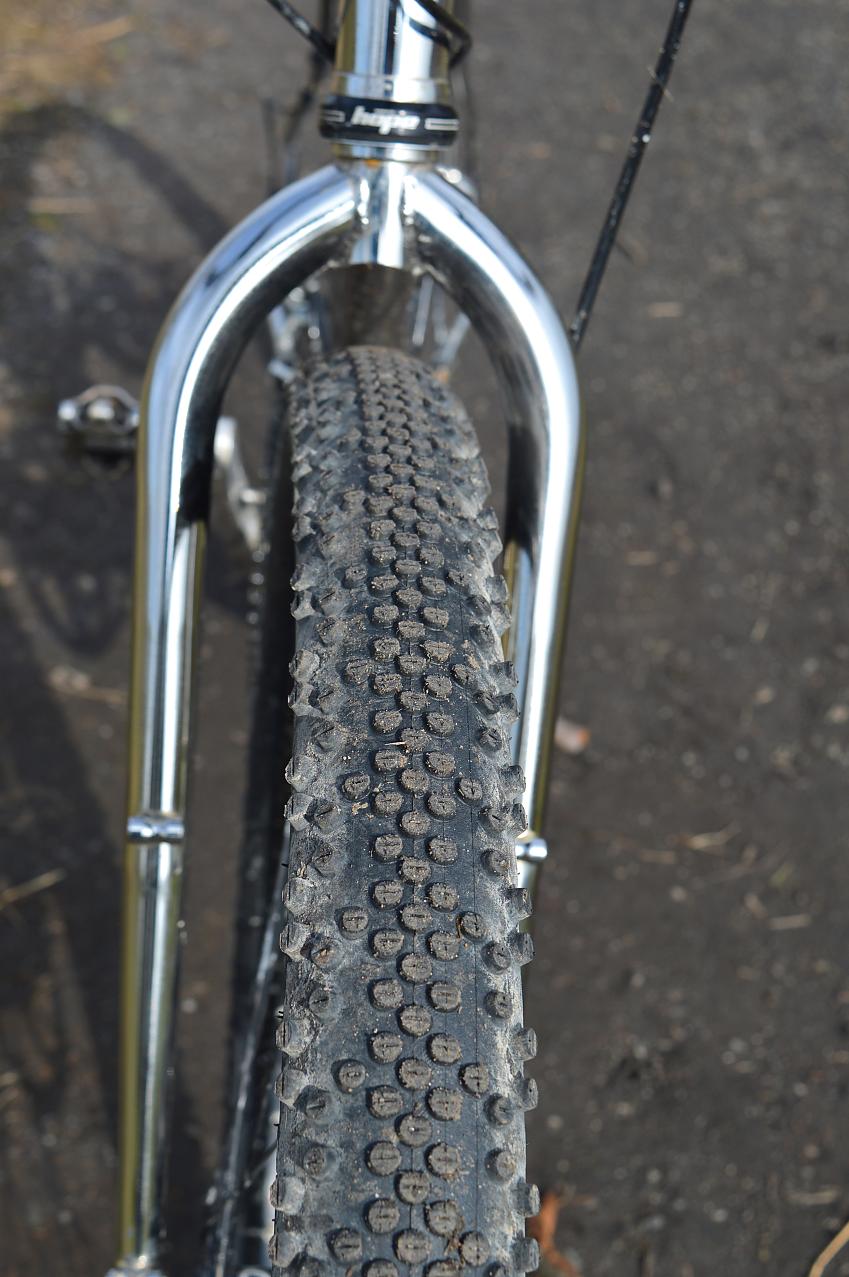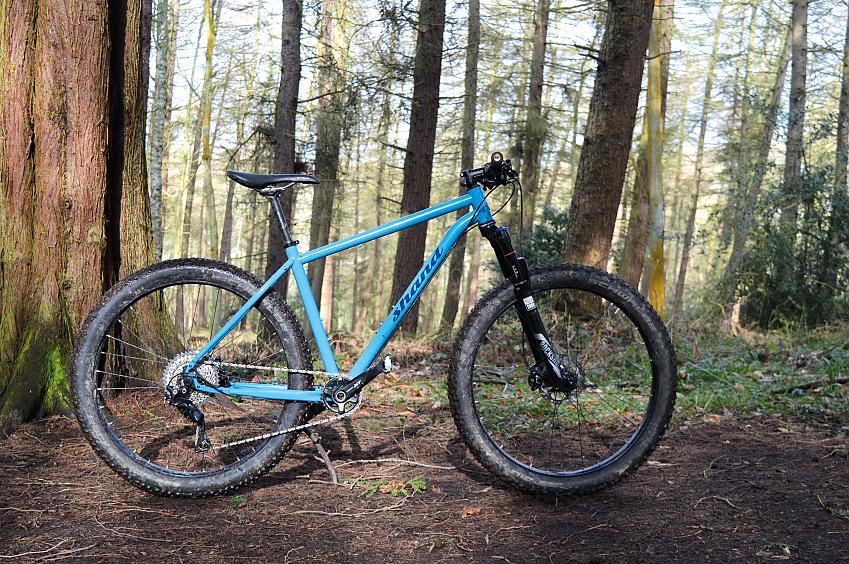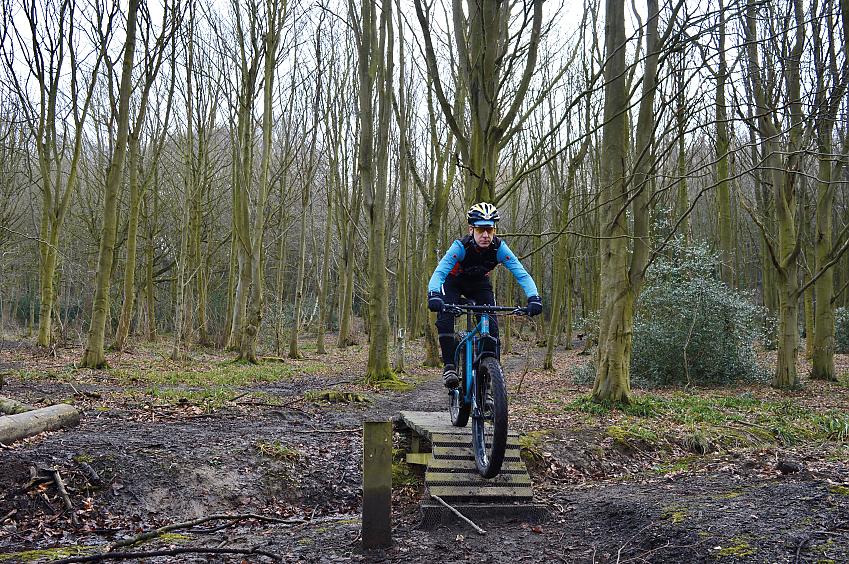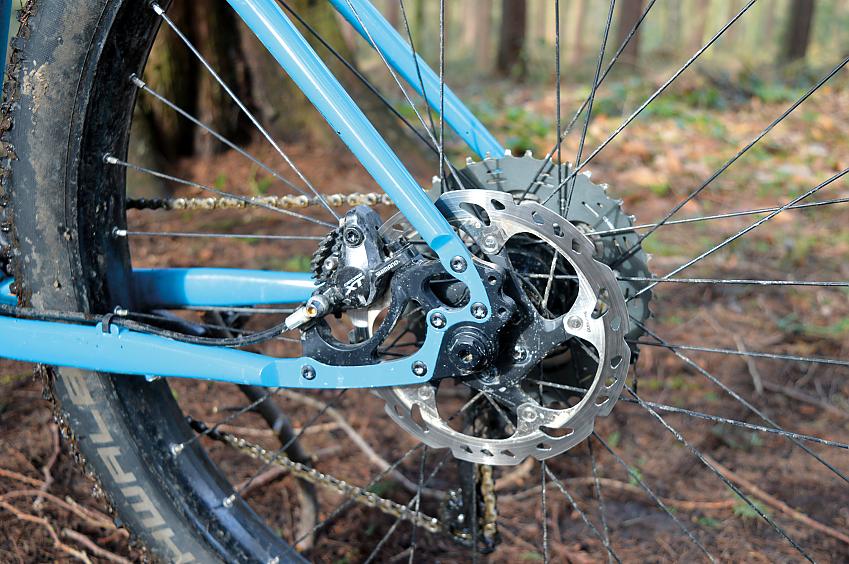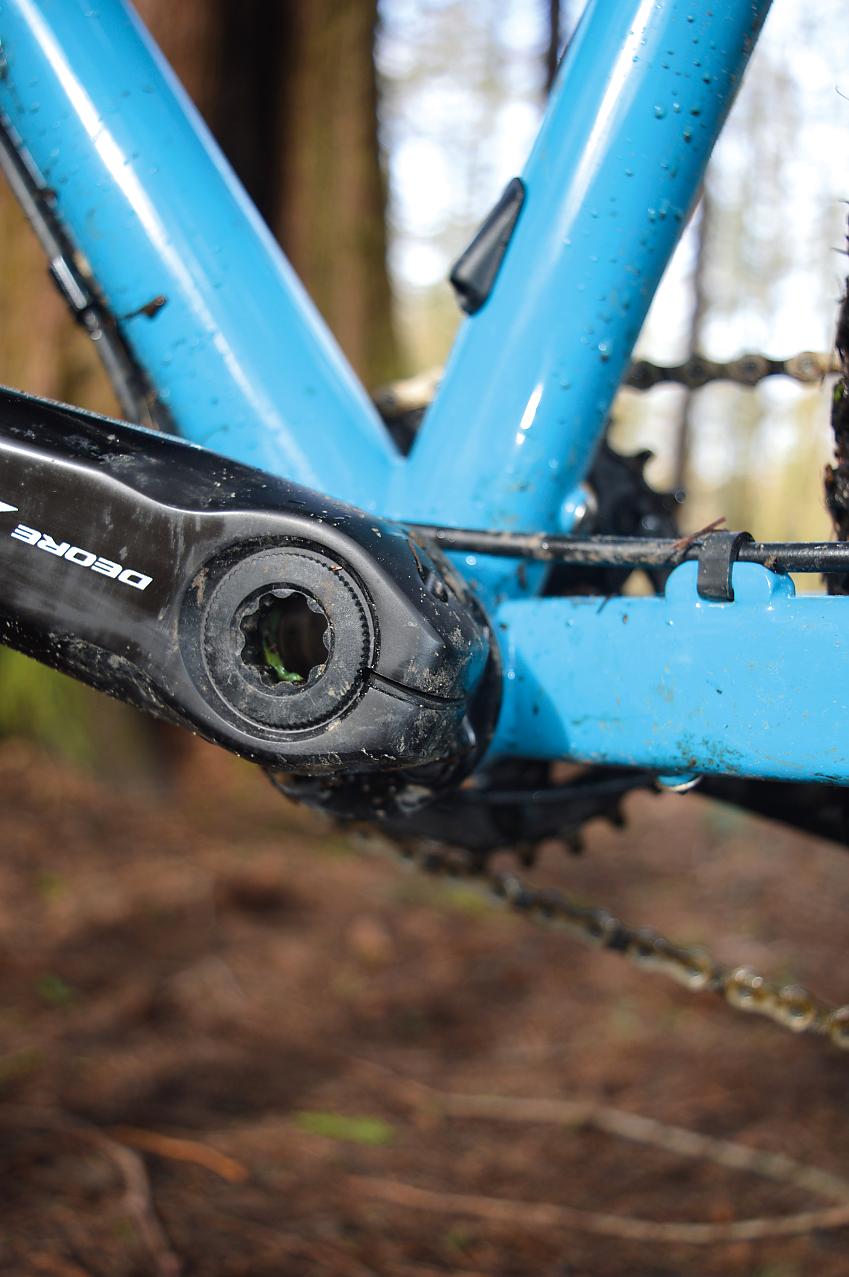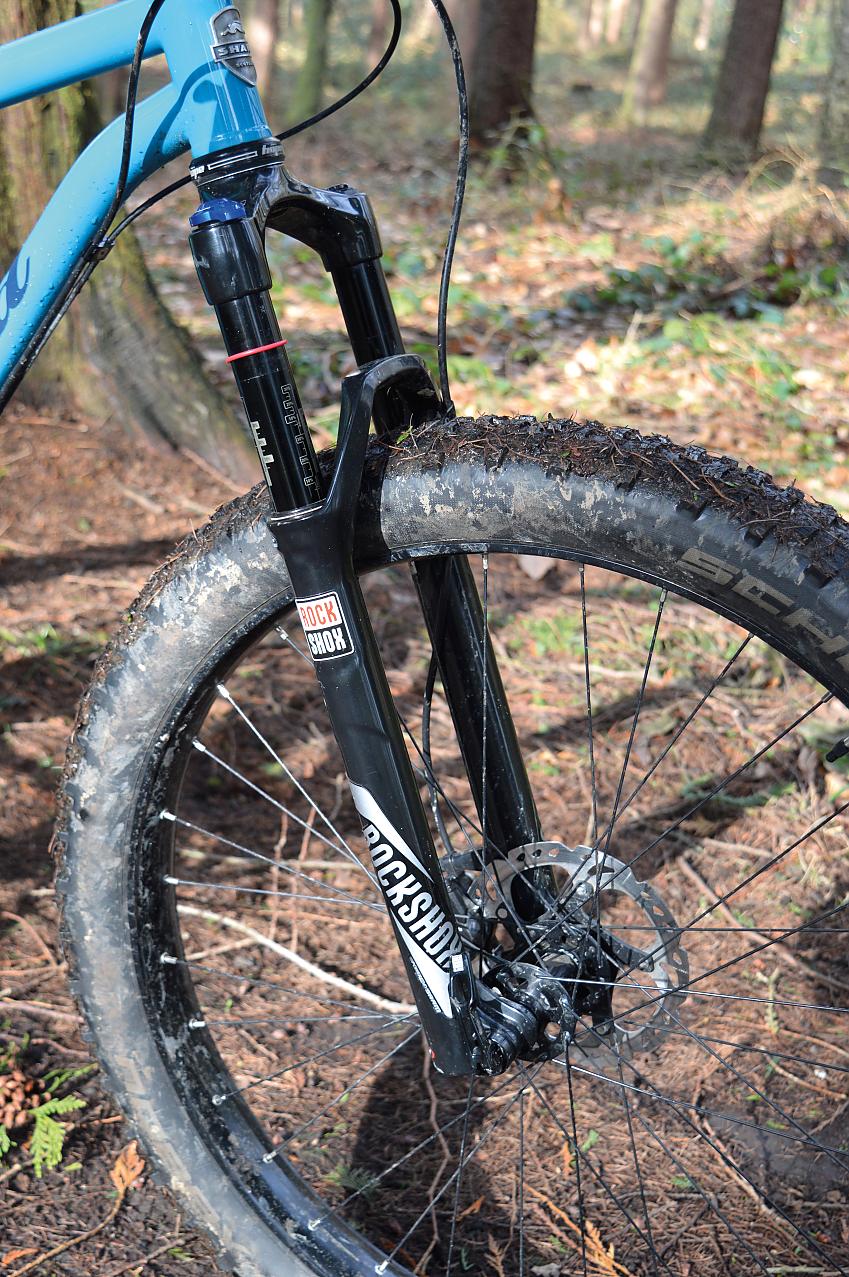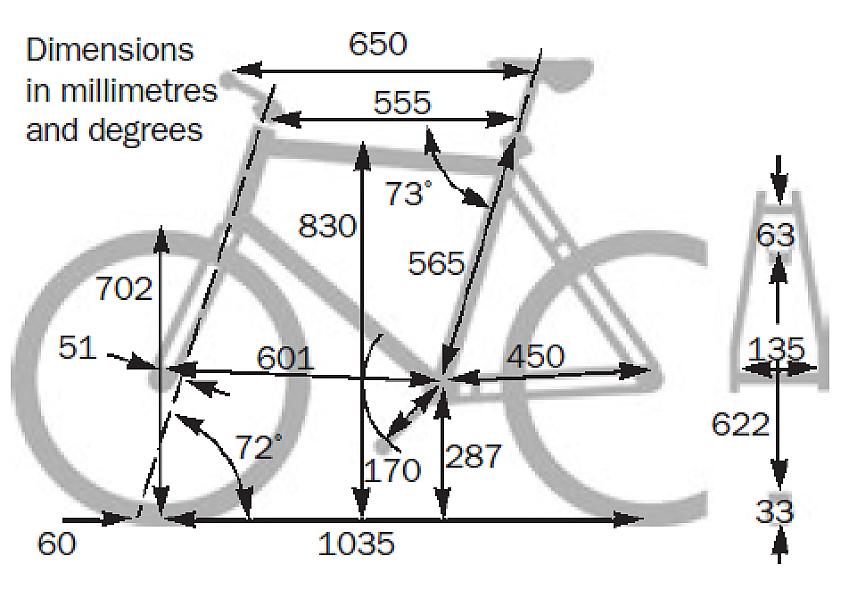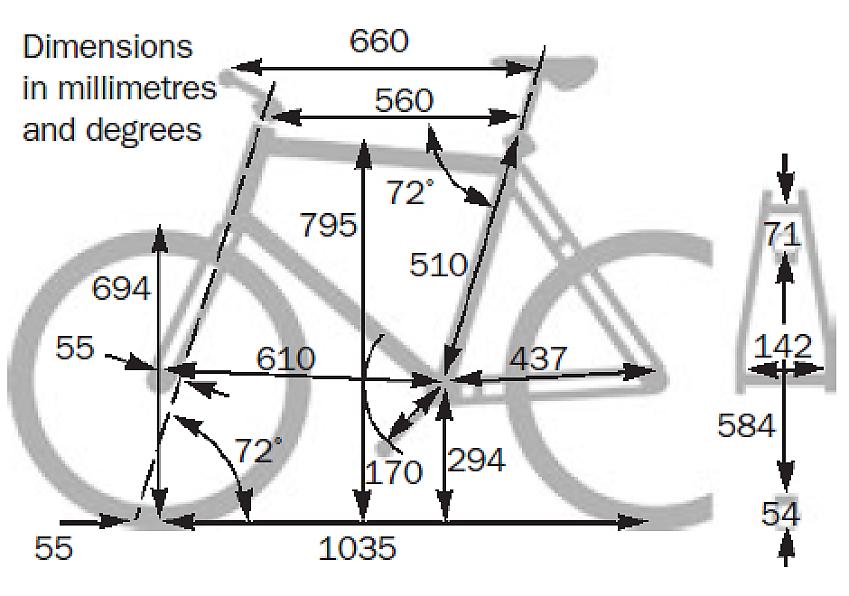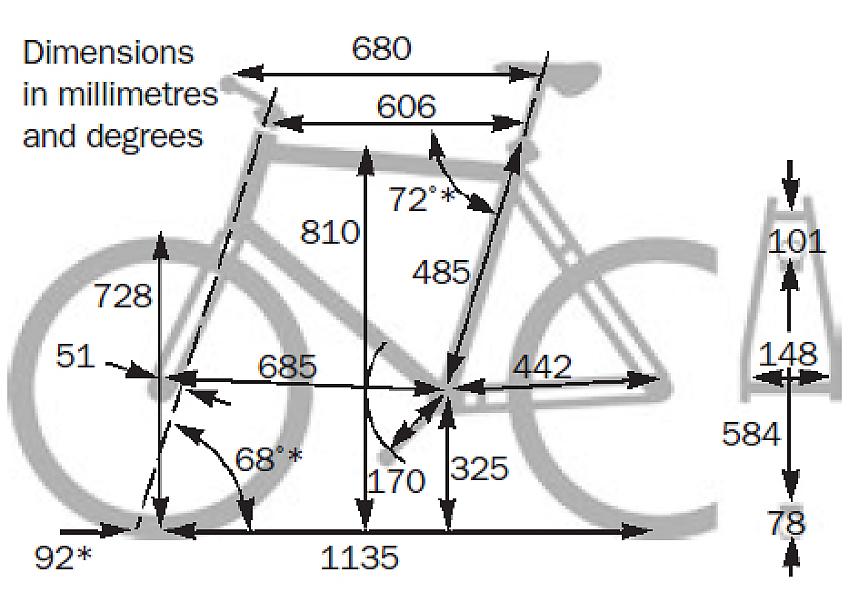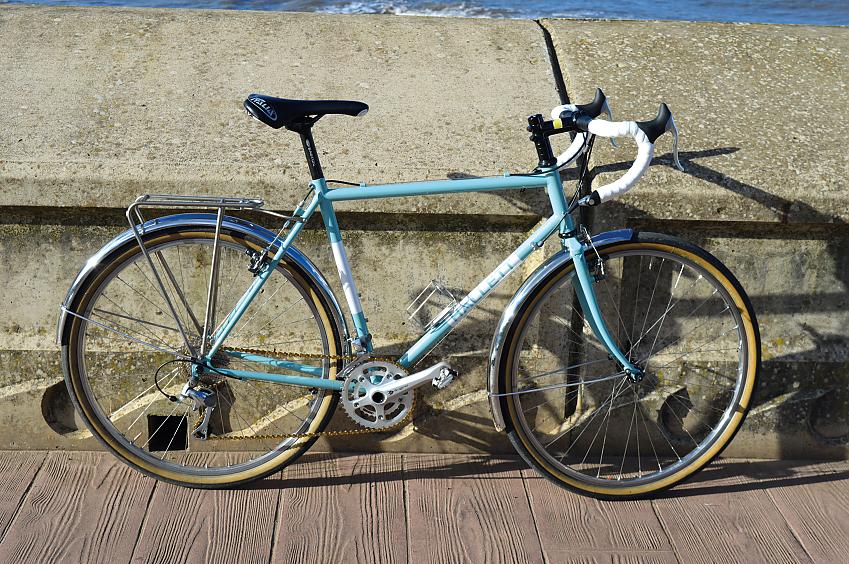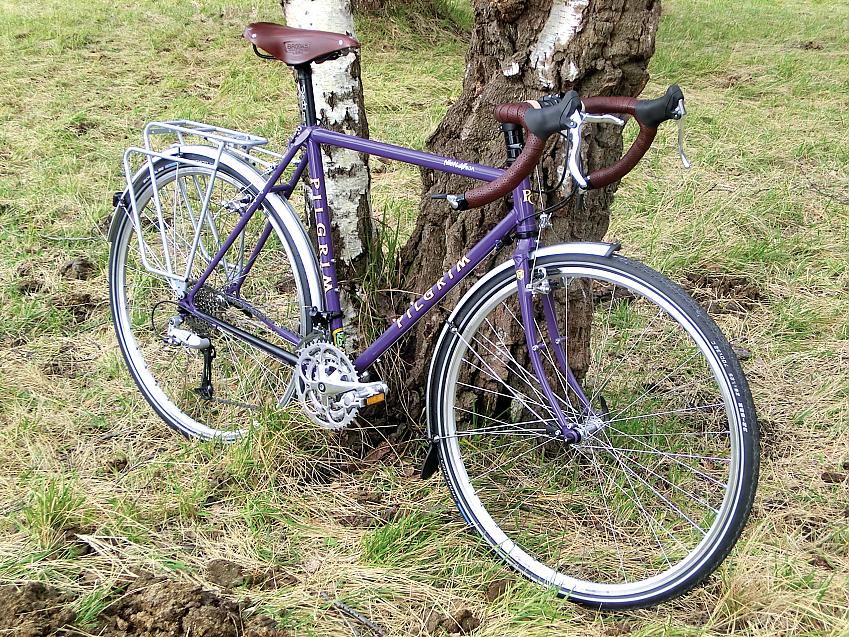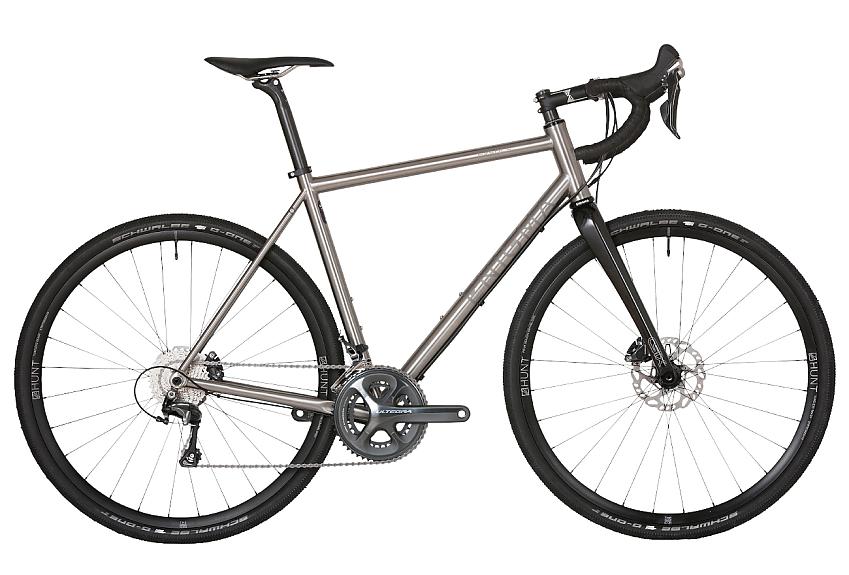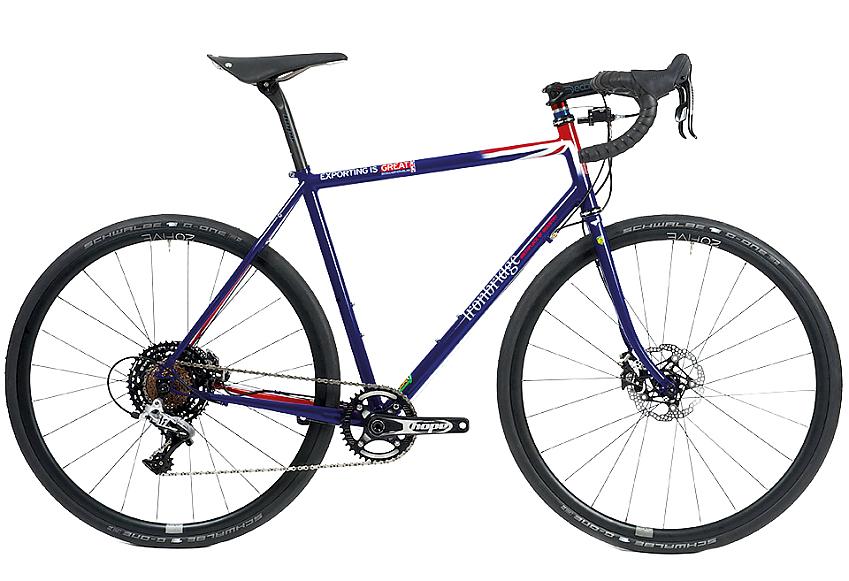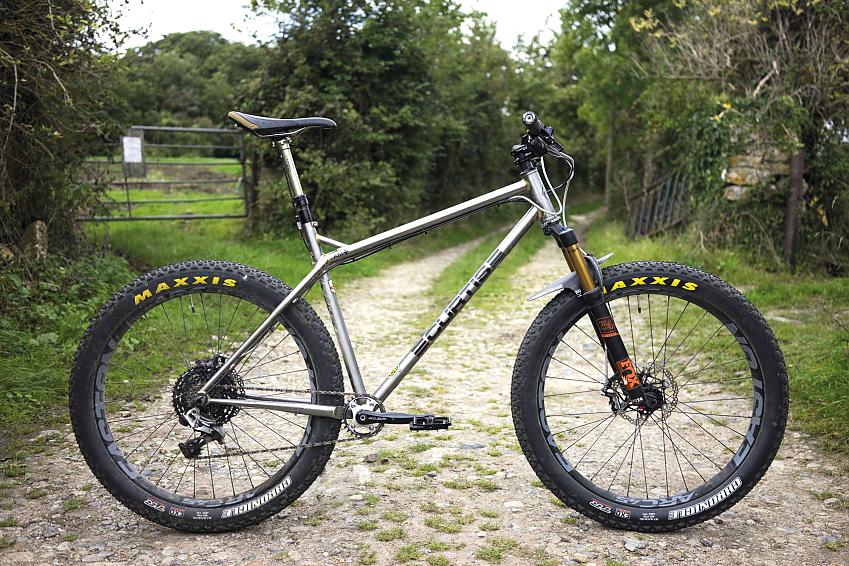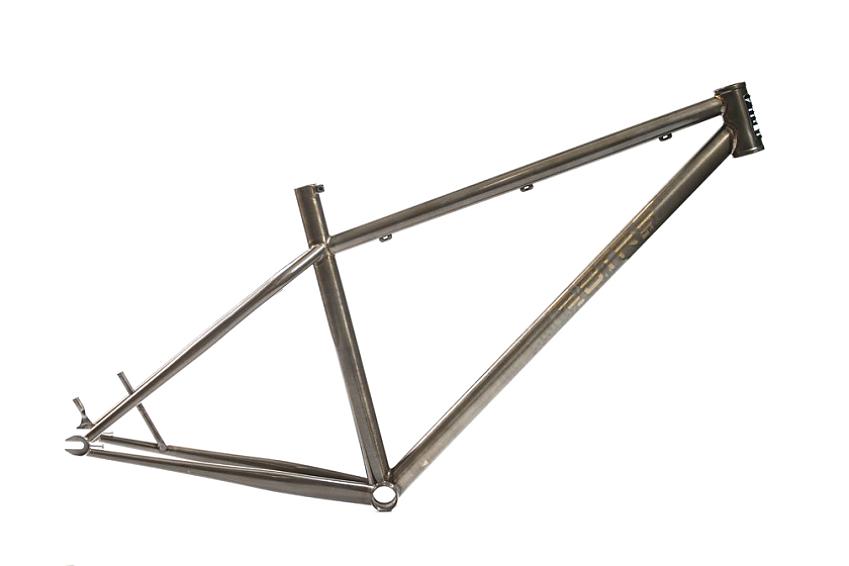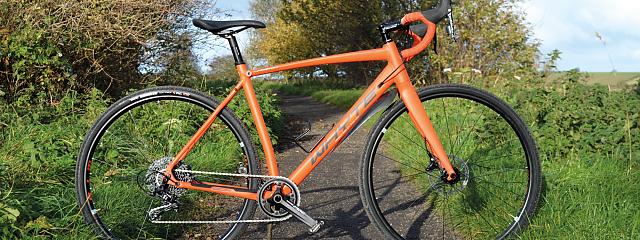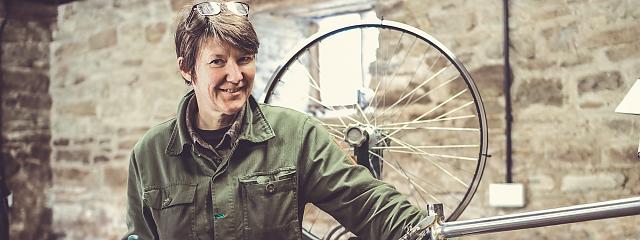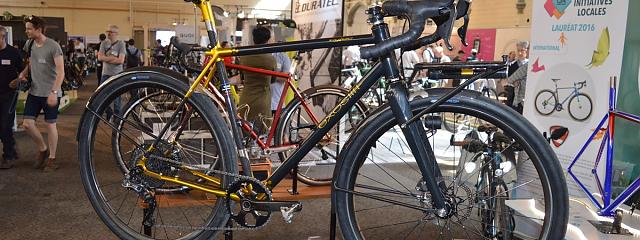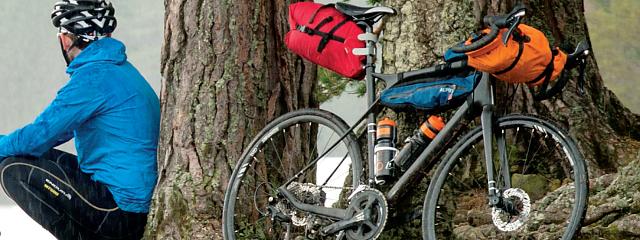
Bike test: British-built steel touring and off-road cycles
Bike test: British-built steel touring and off-road cycles
The market for enthusiasts’ bicycles is dominated by aluminium and carbon machines made in the Far East – bikes that are modish, competitively priced and relatively lightweight.
Against this backdrop, a (probably) heavier and more expensive steel bike that’s handbuilt in the UK is a hard sell.
Yet if you’re not racing, a one kilo difference in the frame weight is something you’ll be aware of primarily when you pick the bike up, not so much when you’re actually riding it. It’s 1-2% of your bike-plus-rider weight.
That comparatively small weight saving often means sacrificing other things, such as comfort, durability or practicality. It’s not all about the weight. A steel frame, and more especially a steel fork, can have different ride quality from oversized aluminium and super-stiff carbon.
Steel is a resilient material that can be designed to flex a little. It’s durable. When it does fail, it lets you down gently. Since steel is inherently strong and stiff, its frame tubes are skinnier, which makes for good-looking bikes. And it can be built with a brazing torch by a guy in a shed rather than in an autoclave by a corporation.
That’s a benefit not so much because the bike can be tailored to your size – the majority of us will comfortably fit mass-produced, off-the-peg bikes, given careful contact-point placement – but because it can be tailored to your preferences. You can have a bike that isn’t mainstream.
Choose different geometry. Choose versatility. Choose more frame fittings and clearances large enough for bigger tyres and/or mudguards… The ultimate non-mainstream bike inhabits a niche of one: it’s bespoke to you.
The three on test here aren’t custom bikes in that sense. They’re handbuilt but they’re off-the-peg designs. All three builders offer à la carte options when it comes to the specification, however, and you can have customised sizing/geometry/fittings if you wish. So I guess we should call them, as Sven Cycles does, semi-custom bikes.
Stanforth Skyelander
Stanforth Bikes’ first model was the Kibo, an expedition bike named after Kilimanjaro’s peak and reminiscent of the Saracen mountain bikes that Richard and Nick Crane took up there in 1984. Saracen Cycles was owned by Simon Stanforth’s father and uncle, and Simon heard the Cranes’ exploits firsthand as a boy.
The Kibo has been joined by a classic tourer, the Skyelander, and a sports tourer, the Stanforth Conway. There are two versions of Skyelander: 700C, which I picked, and 650B.
Frame and fork
The Skyelander frame comes in five nominal sizes: 20-24 inches in 1in increments. Either the 21in or 22in would have fitted me fine, given an appropriate length stem. But since all frames are made to order, Simon asked me to specify a reach (the horizontal distance from the bottom bracket to the top of the head tube) and stack (the vertical distance from the bottom bracket to the top of the head tube) that I would find comfortable.
Had I made a trip to Brighton, I could have been measured for the bike for free. Simon also wanted to know my weight (64kg) and the kind of riding I’d be doing on the bike (mostly on road with a couple of small panniers), because he selects the tube gauges to suit. Normally that selection is from Reynolds 631 for the main tubes and 525 for the stays.
The test bike uses 853 and 725 instead, an optional upgrade that costs £180. With stack, reach and tubesets decided, Simon sent me a geometry diagram.
‘My’ Skyelander frame ended up 13mm taller (stack) and 3mm shorter (reach) than a typical 22in frame. While I might have adjusted the handlebar position more than that by moving, flipping or switching the stem, these small frame geometry tweaks incurred no extra charges.
Simon and I agreed that he would leave the fork steerer long. I then cut it to size and fitted a new star nut when it arrived, a better solution than a too-short steerer. The frameset has the fittings – and, in this case, the equipment – you want for touring, although I removed the front rack for the test as I didn’t need it.
There’s room in both frame and fork for 35mm tyres and mudguards or perhaps 45mm without. However, there wasn’t a lot of room between the front mudguard and my size eight feet, which rubbed against each other on the tightest turns.
It didn’t cause any trouble, and it’s true that the test bike is 3mm shorter than normal. If I were buying rather than reviewing, though, I’d have specified either: a 71° head angle and a 55mm fork offset; or a 10mm shorter stem and a 10mm longer top tube.
Either of these changes would have increased the front-centres distance. To be fair, I could have done this for the review bike.
The frame and fork are powder-coated twice for durability. I think this is behind the only actual problem I had with the frameset: I couldn’t initially get the front wheel out. In freeing it, I bent the quick release.
My vernier calliper confirmed that the jaws of the fork dropouts are narrower than usual – I suppose due to the paint thickness. The wheel went in and out easier thereafter, but stiffly enough that I’d file the dropouts a little. Rear wheel removal was also fiddlier: I had to deflate the tyre due to the forward-facing dropouts.
Components
Full marks for the sturdy touring wheelset. Rigida Sputniks are strong rims, and they’re laced to reliable XT hubs with 36 spokes apiece. You can choose your tyres from Schwalbe’s Marathon range: Plus, Mondial or Racer. I picked the lighter, faster Marathon Racers. As Cycle went to press, lighter wheel options were being added to the Stanforth Bikes website. I’d have chosen from those.
Excellent though they are, the robust Sputnik wheels are tougher and heavier than I need. There’s a choice of brakes too: Avid cantilevers or XT V-brakes. While cantilevers look right on a tourer, I prefer the power of V-brakes.
Since the bike comes with bar end controls in any case, it’s not like I was missing out on the convenience of STI shifters by choosing V-brakes. Dia Compe’s 287V levers work well, although they’re not quite as comfortable as Cane Creek Drop V-brake levers, which have broader hoods.
The drivetrain is the classic touring mix of a sensibly sized triple chainset (48-36-26) and an 11-34 9-speed cassette. Or at least, that’s what it should have been. Inexplicably, the test bike turned up with an 11-32 10-speed cassette! No surprise that the gears wouldn’t index.
Fortunately, 9-speed Dura Ace shifters have a friction setting so it didn’t stop me testing the bike. I raised the cassette issue with Simon Stanforth, who was distraught (“this shouldn’t have happened; no excuses”) and sent a replacement by Special Delivery.
The ride
Despite grim winter weather, I had some nice rides on the Skyelander. Like most tourers, it gets better the further you go.
At 10 miles, it felt somewhat pedestrian; at 50 miles, I appreciated its stability and comfort. The slightly flared handlebar is a good match for the bike, providing surer steering than a narrow road drop handlebar on country lanes awash with mud.
Verdict
There’s no escaping the fact that the test bike wasn’t properly checked over before it went out of the door. On the ‘burnt hand teaches best’ principle, those gearing and fork dropout issues shouldn’t reoccur. So if you’re after a traditional British tourer, the Skyelander should be worth your consideration.
To an extent, you can expect to get out what you put in, due to the customisation opportunities in terms of the design, tubing and specification.
Sven Cycles Pathfinder x11
Sven Cycles is based in Weymouth, where founder Darron Coppin has been building bikes for customers since 2012. Sven bikes have won a clutch of awards at Bespoked, some of them from me. One was for the Pathfinder. While it’s styled more like a gravel bike than a tourer, and will perform that role well, it will also take pannier racks and front and rear, not just frame bags.
Frame and fork
The frame and fork are TIG-welded from Reynolds 921 stainless steel, which looks lovely. It’s practical too, because you can buff away scratches or surface rust with emery cloth. Yes, rust: Reynolds 921 is much more corrosion resistant than other steels but it isn’t as weatherproof as, say, titanium.
As the British Stainless Steel Association notes: ‘it’s stain-less not stain-impossible’. While I cared for the bike like I’d care for any other, there were some small orange marks in places.
The Pathfinder is available in four standard sizes, of which the medium was a perfect fit for me. If you want bespoke sizing, that’s £100 extra.
The sloping top tube gives good standover clearance, which is handy off road. The head tube extends above the top tube, which puts the handlebar a little higher and, incidentally, makes top tube bags fit better. Screw-through axles are used front and rear: 100×12mm up front, 142×12mm at the rear.
I like these on a disc-braked bike. There’s less flex than with a quick release, so the rotors are less likely to rub the brake pads when you ride out of the saddle. The wheels can’t accidentally eject either. The front dropouts are neatly cowled, while the rear ones are supremely versatile.
They’re Paragon Machine Works PolyDrop dropouts, which can be exchanged for different ones to suit different hubs – such as a Rohloff Speedhub or a 135×10mm quick release. Moreover, the drive-side can be split, so the frame is belt drive compatible too.
Frame and fork are well supplied with fittings, the only obvious things missing being a hole in the fork crown and an extra pair of eyelets at the dropouts to make a front mudguard fit more easily. (As it is, you’d need a fork bung.) You can have any extra fittings you want, however. These can be added to the finished frame without spoiling its appearance if you change your mind later, as there’s no paint or lacquer to replace.
Compared to most gravel bikes, the Pathfinder’s clearances are huge. It’s designed to run 650B tyres up to 2.2in front and rear, and evidently newer builds will take tyres up to 2.4in. You might run something even bigger in the unicrown fork – 2.6 or maybe 2.8 – but Darron doesn’t recommend it as he considers it a different bike then.
I’m in two minds about the internal cable routing. It’s neat, especially with such shiny tubing, but inevitably complicates cable outer replacement.
Components
650B wheels allow the use of wide tyres without eating into toe room or adding much weight. While I wouldn’t mind trying a similar-style bike with 29er tyres, the arguments for smaller wheels are equally valid here. They outshine 700C wheels with narrower tyres, and the overall wheel diameter is comparable.
The Schwalbe G-One Bite tyres and DT rims are tubeless compatible, an upgrade well worth making. Running the tyres at around 30psi was great for grip and comfort off road – right up until the inevitable pinch-flat, suffered while winding up the pace over the rocky bridleway of Worm Sike Rigg.
Gearing is largely from SRAM’s Force 22 groupset, with mechanical double-tap shifters. The chainset is a versatile White Industries R30 with 46-30 chainrings. You can fit rings from 24-38 teeth in the inner position and from 38-52 in the outer because it has a variable bolt circle diameter. Clever! I’d have been happier with a single ring sized somewhere between the two, which is what the cheaper Pathfinder 1×11 has.
The brakes are TRP Spyres. They offer smoother modulation than the single-piston Avid BB7s I’d normally choose, with no discernible difference in stopping power. Whether they’ll be as robust and easy to live with as BB7s remains to be seen.
Since the rear brake is mounted on the chainstay and points upwards, water might get into the cable housing. I had a rear brake like that freeze solid this winter, though this one was OK.
The ride
The Pathfinder rides better off road than any gravel bike I’ve tried so far: it’s more comfortable and more controlled. That’s largely down to the tyres, 54mm tyres at 30psi being simply better than higher pressure 35-40mm tyres – not just on rocky bridleways but on forest fire roads and gravel tracks too.
The G-One tyres also roll better than you’d expect on tarmac, although if you were doing a lot of road riding on this bike, a different (or second) set of tyres would be worthwhile. Have a look at the Compass Switchback Hill, which Sven Cycles stocks.
Similar to the Sonder Camino, the Pathfinder’s riding position is relatively relaxed, thanks to a reach that’s not too stretched and a wide, flared handlebar with a shallow forward sweep.
You don’t have too much weight on your hands, and you can get down on the drops without worrying you’ll ride nose heavy into bumps, ruts and drops. (It was the rear tyre I pinched.)
Verdict
This is one of the few drop-bar bikes I’ve really enjoyed riding off road; most have felt like some kind of punishment. I’d load the Pathfinder fairly lightly if I were bikepacking to avoid losing its sense of elan. Yet it could easily do double duty as a loaded tourer on either tarmac or dirt roads. With the right tyres, it could be a fine road-plus bike too.
This versatility, which all gravel bikes claim but don’t all deliver, goes some way to justifying the suck-your-teeth price. The 1×11 version is £1,000 cheaper, mind you…
Shand Bahookie
Steven Shand has been building steel bikes in Scotland since 2003, with a focus more recently on ‘all-road’ bikes and adventure mountain bikes. The Bahookie is Shand’s do-it-all 29er hardtail. It’s a bike I considered for the ‘1 bike only’ feature, and which the Adventure Syndicate’s Lee Craigie uses for just that.
It’ll take luggage, different forks, different wheels, different gearing. There’s even a drop-bar version, although that uses a different frame. I chose a flat-bar Bahookie with 650B+ wheels and a suspension fork.
Frame and fork
The Bahookie is TIG-welded from custom-drawn Columbus Niobium tubing from Italy (so this article’s ‘British steel’ headline doesn’t entirely work). There are fittings for three bottle cages, a rear rack and a ‘stealth’ dropper seatpost.
The latter’s cable would run up inside the seat tube, while the gear cable and brake hoses are all external and thus easily accessible. The seat tube is 30.9mm, a common size for droppers. It’s fitted with a shim for the 27.2mm rigid seatpost supplied, a narrower post being a bit more forgiving.
The bottom bracket is a 73mm press-fit shell. Not being a fan of press-fits, I requested the optional (£105) eccentric bottom bracket. This has an additional benefit: it provides a way to tension the chain if you want to switch between geared and singlespeed usage.
The dropouts are PolyDrop ones like the Sven Pathfinder’s and the advantages are the same: you’re not locked into one axle standard; and the frame will split, so you can use a belt drive. (Beltdrive singlespeed and belt-drive Rohloff are off-the-peg Bahookie options.)
Up front, a straight 44mm head tube looks better on a steel frame than a tapered one yet still accommodates modern suspension forks. Here the fork is a Rockshox Reba RL with Boost (110mm) axle spacing and 120mm of air-sprung travel.
It’s not as plush or as tuneable as the out-of-production Manitou Magnum Pro on my own plus-size hardtail. You can upgrade its fork crown compression lockout to handlebar control, though, which is much more convenient if you regularly find yourself standing up to pedal on climbs.
The Bahookie is available in four standard sizes, small to extra large. If you need something different, custom sizing is £200 extra. The medium was a good fit for me.
The 120mm Reba felt fairly tall, since I normally ride a shorter suspension fork or a rigid one, so I flipped the stem over to reduce the handlebar height. As with any telescopic suspension fork, the height, head angle, and trail will vary through its travel.
Components
It costs £75 extra to have tubeless 650B+ wheels instead of 29er wheels with tubes. It’s worth it for the comfort improvement alone. Softer, three-inch tyres take the edge off bumps and vibration, making a hardtail a viable alternative to a full-suspension bike even for those of us with older bones riding on choppy trails.
The tyres’ bigger footprint makes them sit on top of the trail surface more rather than sinking in. It’s often an advantage but not on slippery mud that can shear away from firmer ground underneath.
Normally, a Nobby Nic front tyre and a Rocket Ron rear would be a reasonable combination for year-round riding. In plus size, a more aggressively treaded front tyre like a Surly Dirt Wizard would work better for UK winter conditions.
Gearing is 1×11, using a big cassette and a 30T narrow-wide chainring. The resulting range of 20-78in was perfect for me for mountain biking. Note that while you can run this bike with a Rohloff or a singlespeed hub, it’s not designed for a front derailleur.
So you need to select your chainring size with care. The Shimano XT hydraulic brakes are excellent, allowing easy one-finger braking.
Faster descenders and bigger riders generally might want a larger front rotor; it was fine for me. The chainstay-mounted rear calliper won’t interfere with a rear rack, and since it’s hydraulic it won’t seize in winter due to water ingress.
The ride
Aside from its smaller diameter wheels, the 650B+ Bahookie is similar to my own 29+ hardtail, so it felt familiar. Its first outing was with about 100 others on a remembrance ride for a local rider and trail builder (RIP Lewis).
I don’t normally ride with guys in downhill pyjamas on long-travel bikes, but found myself hustled along in a group of them on the first technical descent after overtaking everyone on the way up the hill. The Bahookie was surefooted enough that I didn’t crash, despite being at the edge of my comfort level.
It’s a capable trail hardtail, and with dropper post and a grippier front tyre it would be more capable still. As with any plus-bike, there’s a narrow sweet-spot for tyre pressure. Too hard and you’ll bounce off rocks like a Spacehopper; too soft and the tyres will squirm when you bank the bike over.
Invest in a digital pressure gauge so you can see what works for you. The Bahookie has 50mm wide rims, which provide the lateral support you want for lower pressures.
Verdict
The Bahookie lives up to its do-it-all hardtail billing: it would work well for 100% of my off-road riding. As with the Sven Pathfinder, this versatility takes some of the sting from the price; over three grand is a lot of money for a steel hardtail.
Of course, you could get just the frame, then re-use parts from an existing bike. Given the Bahookie’s dropouts, head tube, bottom bracket and tyre clearances, there’s a good chance they’ll fit.
First published in Cycle magazine, April/May 2018 issue. All information correct at time of publishing.
Our test promise
At Cycling UK and Cycle magazine, we are proudly independent. There’s no pressure to please advertisers as we’re funded by our members. Our product reviews aren’t press releases; they’re written by experienced cyclists after thorough testing.
Tech specs
Stanforth Skyelander
PRICE: £2,550 as supplied (frame and fork from £950)
SIZES: 20, 21, 22, 23, 24in or custom
WEIGHT: 13.33kg (inc pedals, without front rack)
FRAME & FORK: Reynolds 853 steel frame, lugged and brazed, with 725 stays and fittings for rack, mudguard, three bottles. Reynolds 631 fork, lugged and brazed, with fittings for lowrider rack and mudguard
WHEELS: 35-622 Schwalbe Marathon Racer tyres, 622-19 Rigida Sputnik rims, 36×3 spokes, Shimano Deore XT hubs
TRANSMISSION: VP Touring pedals (swapped for Shimano M520 SPD), 170mm Shimano Deore XT M771 triple 9-speed chainset, 48-36-26 chainrings, Shimano SM-BB70 Hollowtech bottom bracket, Shimano HG53 9-speed chain, Shimano HG500 10-speed 11-32 cassette (later exchanged). Dura Ace 9-speed bar-end shifters, Shimano Deore front derailleur, Deore XT M771 9-speed rear. 30 ratios, 22-121in
BRAKING: Dia Compe 287V aero brake levers, Shimano Deore XT V-brakes
STEERING & SEATING: Profile Design Drive cushioned tape, 420×26.0mm Nitto Dirt Drop RM-013 touring handlebar, 80mm×7° threadless stem, Tange Seiki J27 1 1/8in threadless headset. Brooks Cambium B17 saddle, 27.2×300mm Zoom seatpost
EQUIPMENT: Tubus Cargo rear rack, Tubus Tara lowrider front rack (removed for test), SKS Chromoplastic mudguards, two bottle cages
Sven Cycle Pathfinder x11
PRICE: £4,200 (frame and fork from £1,700)
SIZES: S, M, L, XL (M tested)
WEIGHT: 11.2kg (inc pedals)
FRAME & FORK: Reynolds 921 stainless steel frame with 142×12mm Paragon PolyDrop dropouts and fittings for rack, mudguard, two bottles. Reynolds 921 unicrown fork with 100×12mm axle and fittings for front rack
WHEELS: 54-584 Schwalbe G-One Bite tyres, DT rims, 32 ×3 spokes, Hope Pro4 hubs
TRANSMISSION: no pedals (Shimano M520 used), 170mm White Industries R30 chainset, 46-30 White Industries chainrings, White Industries external bottom bracket, SRAM PC1170 chain, SRAM 11-32 11-speed cassette. SRAM Force 22 mechanical shifters and derailleurs. 22 ratios, 26-114in.
BRAKING: SRAM Force 22 levers, TRP Spyre cable discs with 160mm rotors
STEERING & SEATING Cork tape, 460×31.8mm Salsa Cowchipper handlebar, 90mmx10° Thomson Elite stem, Hope headset. Selle Italia Flite Titanium saddle, 27.2×330mm Thomson Elite layback seatpost
EQUIPMENT: Two bottle cages
Shand Bahookie
PRICE: £3,250 as tested (frame only £1,295)
SIZES: S, M, L, XL, custom (M tested)
WEIGHT: 13kg (inc pedals)
FRAME & FORK: TIG-welded Columbus Niobium steel frame with 148×12mm Paragon PolyDrop dropouts and fittings for three bottles, stealth dropper seatpost, rear rack. Rockshox Reba RL Boost 15×110mm) 120mm travel suspension fork
WHEELS: 75-584 Schwalbe Nobby Nic (front) and Rocket Ron (rear) tyres, set up tubeless, on Halo Vapour 50 wheels with 32×3 spokes
TRANSMISSION: no pedals (Shimano M520 used), 170mm Shimano XT M8000 chainset with 30T narrow-wide ring, Shand eccentric bottom bracket, Shimano HG701 chain, Shimano XT M8000 11-speed 11-42 cassette. Shimano XT M8000 shifter and rear derailleur. 11 ratios, 20-78in
BRAKING: Shimano XT M8000 hydraulic disc with 160mm Ice Tech rotors
STEERING & SEATING: ESI grips, 720mm×8° USE Ultimate Rip handlebar, 70mm×7° Shand stem, Hope headset. Shand saddle, 27.2×350mm Shand seatpost with 30.9mm shim
EQUIPMENT: none
Other options
Hallett 650 Adventure £1,150+ (frame and fork)
650B tourer built from Columbus Zona and SL tubing by Cycle’s technical editor. Also available with stainless steel highlights and fancy lugs. Reviewed by Dan Joyce in 2017.
Pilgrim Cycles Northdown £1,950+ (bike)
Reynolds 631 tourer with 700C wheels that, like the Skyelander, is available with a threaded or threadless steerer. Reviewed by Julie Rand for Cycle magazine in 2016.
Enigma Escape £3,999 (bike)
Made-in-the-UK titanium adventure bike with a carbon fork, hydraulic discs and through-axles. Clearance for tyres up to 700×42C or 650×50B.
Ironbridge 1851 £1,850 (frame and fork)
Reynolds 853 gravel bike that won a Bespoked 2017 award. Choice of 853 or carbon fork. The seatstay bridge is a work of art.
Curtis AM+ £1,150+ (frame)
Fillet-brazed from a mix a tubesets, this hardtail has a longish top tube, a 66.5° head angle and clearance for 27.5+ tyres. Takes a 120mm fork – or longer.
BTR Chaser £1,050 (frame only)
Better known for its long, low and slack trail bikes, BTR also does cross-country frames like this 29er singlespeed. The geared Chaser XC frame is £50 dearer.






